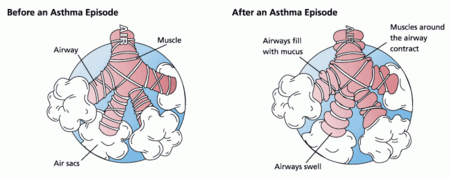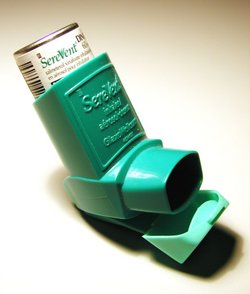ON the football field, he's in control. Off the field, he works even harder to ensure his asthma doesn't control him.
Jerome (The Bus) Bettis, running back for the Pittsburgh Steelers, has had asthma for nearly 20 years, but he still has been able to have an All-Star career as a professional athlete. The key to not letting asthma run your life, he says, is keeping the symptoms under control. To that end, he has joined with the American Lung Association to support an objective, asthma assessment tool, the Asthma Control Test (ACT). The five questions included in the ACT are based on measures of asthma control established by the National Institutes of Health and can help people with asthma, and their doctors assess the patient's level of symptom control.
"I've experienced first-hand the consequences of uncontrolled asthma," Bettis says. "My chest felt as though it was being squeezed and I couldn't' breathe." The fifth all-time leading rusher in the National Football League says he was first diagnosed with asthma at age 14 after passing out and being rushed to the hospital during his high school football tryouts in Detroit. Rather than keeping him off the field, his mother encouraged him to keep playing and follow his doctor's orders to keep symptoms under control.
"The ACT is an easy way to gauge how often asthma symptoms interfere with your life," he says. "Controlling symptoms allows you to stay active and do more of the things you want to do, which, for me, is playing football. I urge everyone with asthma to take the ACT as a part of their asthma game plan."
Asthma is a chronic, inflammatory lung condition affecting approximately 20 million Americans. Both inflammation and broncho-constriction cause airways to narrow, leading to coughing, wheezing, shortness of breath and chest tightness. Doctors say African-Americans are more likely than Whites to get this disease.
Current research indicates that nearly half of asthma sufferers do not have their asthma under control. Though there is no cure, asthma can be a highly controllable disease when patients take the appropriate steps toward symptom prevention and daily long-term management. "I see many patients with asthma who don't realize that daily use of a rescue inhaler or experiencing frequent symptoms is not normal and means that their asthma is not being controlled properly," said Dr. Norman H. Edelman, chief medical officer for the American Lung Association and vice president for health sciences at State University of New York at Stonybrook.
"After I was diagnosed when I was 14, I took my medicine for a couple of years and I thought I was fine," Bettis says. But as his comfort level increased, the asthma was getting out of control. He says he became, "a ticking time bomb." In 1997, the bomb exploded. Despite having been symptom-free for years, Bettis suffered a major asthma attack during a nationally televised football game. It was a life threatening situation, he says now, and inspired him to work with his doctors and map out a game plan to help him control his asthma on and off the field.
Now Bettis works to educate people so they don't have to live with regular asthma symptoms. "I've been so vocal about it because people think it's the kiss of death, and they can't do what they want to do." When he visits respiratory patients in the hospital, he says people there are especially surprised when he tells them he also has asthma. "People need to understand that you can do whatever you want to do as long as you manage and control your asthma."
The American Lung Association recommends everyone 12 years of age and older with asthma take the Asthma Control Test, even if they think their asthma is well-controlled. It is a five-item questionnaire, which gives physicians and patients a simple, yet highly predictive tool they can use to help assess asthma control. The total ACT score is based on a range of 5 to 25. A score of 19 or less may be an indication that asthma symptoms are not under control and patients should make an appointment with their doctor to discuss their ACT results. Free copies of the test are available at www.AsthmaControl.com or call 1-800-990-4100.
COPYRIGHT 2005 Johnson Publishing Co.
COPYRIGHT 2005 Gale Group



